Lincoln Park is a 7-acre park located in Washington, D.C., one mile east of the U.S. Capitol building. The park has a history as both a neighborhood park and a memorial landscape. Several design changes have altered the park's appearance, but the focus remains the 1876 Emancipation Monument and the 1974 memorial to Mary McLeod Bethune. Lincoln Park historically symbolized political freedom and was used as a venue for Civil Rights rallies in the 1960s.
"I leave you love. I leave you hope. I leave you the challenge of developing confidence in each other. ... I leave you respect for the use of power. ... I leave you racial dignity. ... I leave you, finally, a responsibility to our young people." From Mary McLeod Bethune Memorial Inscriptions. Full text in NPS Lincoln Park Cultural Landscapes Inventory report (2009)
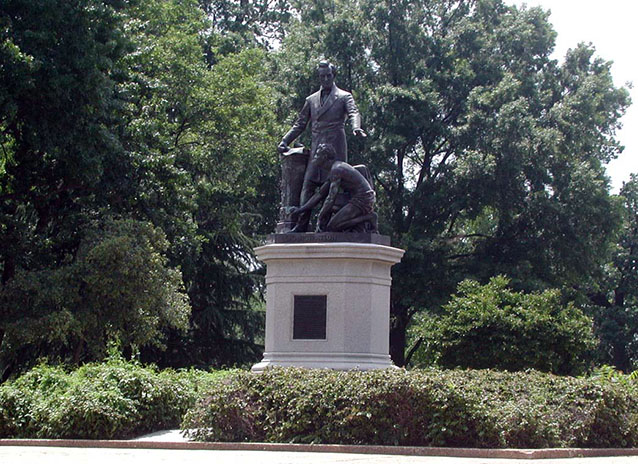
NPS
The current character of the cultural landscape reflects the NPS rehabilitation from between 1969 and 1971. When Lincoln Park was first designed, the system of curving walkways blended with the natural topography of the park. A rural Gothic style lodge was added in 1875 with restrooms and maintenance equipment. In 1934, soon after the NPS assumed control of the park, rehabilitation work funded by the Works Progress Administration replaced the picturesque landscape and curvilinear walkways by a more formal, geometric plan. More entrances were created, benches and sandboxes were added or repaired, and many trees were replaced. Few changes were made until the 1970s
The park’s major features are its two memorials. The Emancipation Monument was sculpted by Thomas Ball. On the morning after Lincoln's death in 1865, sixty-year old Charlotte Scott, a former Virginia slave living in Ohio, donated five dollars to her employer and asked that it be used toward a monument for the president. This initiated a campaign among freed slaves, eventually leading to $18,000 being raised for the memorial.
Frederick Douglass delivered the speech at the monument's dedication on April 14, 1868, which was attended by President Ulysses S. Grant and other political figures. The Emancipation Monument served as the primary national memorial to Lincoln until 1922, when the Lincoln Memorial was dedicated in Washington's West Potomac Park.
The memorial is composed of a life-size figure of Abraham Lincoln, extending one hand over a kneeling African American man and holding a copy of the Emancipation Proclamation in the other hand. The former slave is depicted as rising, with broken shackles on his wrists. The figure was modeled after Archer Alexander, the last Missouri slave captured under the Fugitive Slave Law.
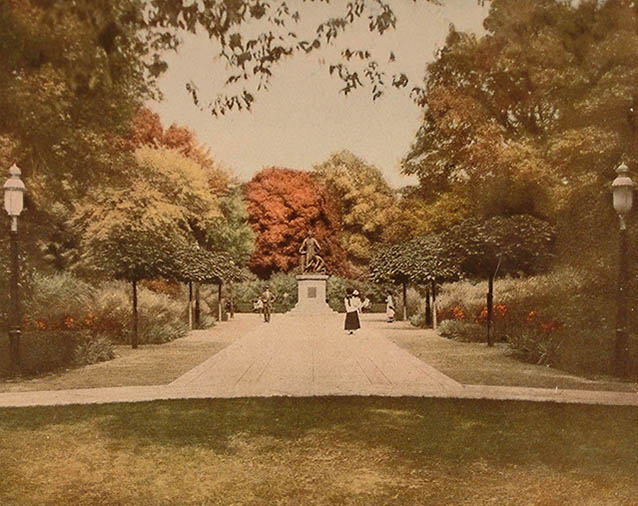
Courtesy of Washington, D.C. Public Library, Washingtoniana Collection (in NPS Lincoln Park Cultural Landscape Inventory report)
Historic Significance of Lincoln Park
The cultural landscape has two periods of significance: 1791, and 1867 to 1934. These periods are associated with the year when the land was included on the L'Enfant Plan of Washington and acquired by city commissioners (1791), and the period of landscape design and development beginning from the date of initial design by the Office of Public Buildings and Grounds and continuing through its reconstruction by the NPS (1867-1934).
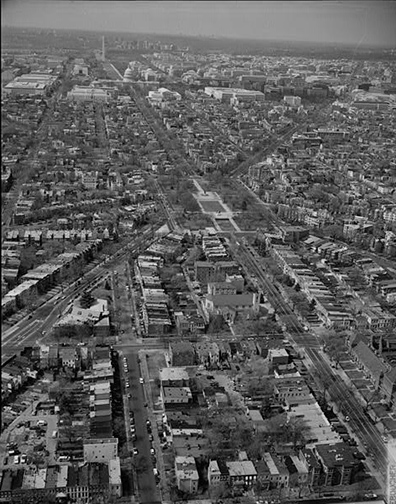
NPS (HABS Collection, Library of Congress)
Additionally, it is significant as a prominent site related to African American history in the city. From the dedication of the Emancipation Monument in 1876, to the use of the park for Civil Rights rallies in the 1960s, to the dedication of the Mary McLeod Bethune memorial in 1974, Lincoln Park has been significant to the African American community of Washington, D.C.
Mary McLeod Bethune, the daughter of slaves, founded the National Council of Negro Women (NCNW) in 1935, after more than three decades of service as an educator and activist. The Mary McLeod Bethune memorial in Lincoln Park was the first memorial to an African American individual built on public land in Washington, D.C., and it was the first portrait statue of an American woman on a public site in the city.
In preparation for the new statue, the NPS undertook a major rehabilitation of Lincoln Park in the 1960s. The park's reconstruction in the late 1960s was based on a design by noted African American architect Hilyard Robinson. The final design was a rectilinear walk layout, with a large sunken central plaza between the two statues. The design of the landscape contributed meaning to the two statues. The sunken plaza was meant to keep the taller Bethune memorial from overpowering the earlier Emancipation Monument, which was turned so it would face towards the Bethune memorial. While some of the park’s existing small-scale features date to Robinson's 1970s redesign, many of them have been replaced since 2003.
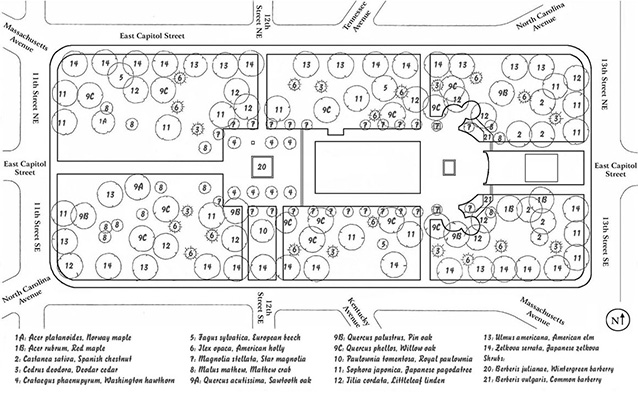
NPS
The park’s design is determined primarily by its circulation system and its vegetation. The existing circulation pattern retains characteristics and alignments that are associated with the 1934 NPS redesign of the park.
Today, the two memorials are oriented on the east-west axis through the center of the park, which also forms a dominant view corridor from E. Capitol Street to the U.S. Capitol. The rotation of the the Emancipation Monument emphasized this view. Robinson’s design, with the addition of the large, sunken plaza, somewhat altered this organization, but did not fundamentally change it.
Lincoln Park has long served as a gathering place for community. It is a destination for both its memorial features and its open space. The 1970s redesign changed the picturesque landscape to a more formal design, which altered the feeling that was conveyed to park visitors. The associative qualities of Lincoln Park remain intact, and have even been strengthened by recent changes. However, the park’s dual uses as memorial site and as neighborhood park were altered by the 1970s reconstruction.
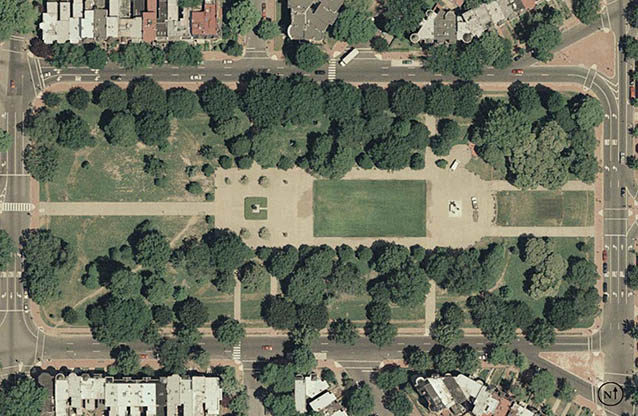
NPS (National Capital Region GIS)
Quick Facts
- Cultural Landscape Type: Designed
- National Register Significance Level: National
- National Register Significance Criteria: A, B, C
- Period of Significance: 1791; 1867-1934
Landscape Links
Last updated: October 8, 2021
